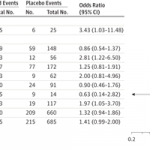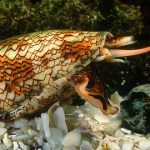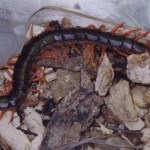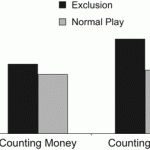pain
Several years ago, Harriet Hall coined a term that is most apt: Tooth fairy science. The term refers to clinical trials and basic science performed on fantasy. More specifically, it refers to doing research on a phenomenon before it has been scientifically established that the phenomenon exists. Harriet put it this way:
You could measure how much money the Tooth Fairy leaves under the pillow, whether she leaves more cash for the first or last tooth, whether the payoff is greater if you leave the tooth in a plastic baggie versus wrapped in Kleenex. You can get all kinds of good data that is…
A few of the recent pieces I’ve liked:
Margot Sanger-Katz at the New York Times’ The Upshot: Yes, Soda Taxes Seem to Cut Soda Drinking
Mary McKenna at Germination: MRSA In Sports: Long-Standing, Simple to Prevent, Still Happening
Joe Fassler at The Atlantic: How Doctors Take Women's Pain Less Seriously
Sarah Kliff at Vox: This study is forcing economists to rethink high-deductible health insurance
Lydia DePillis at the Washington Post’s Wonkblog: ‘Everything is a workaround': Life in Obama’s agencies as Congress does nothing
Celeste wrote about this last week, but in case you missed it:…
My opinion about medical marijuana has been fairly consistent. First, the claims made by its advocates for it far exceed the evidence for its benefit, which is why I've referred to it as the "new herbalism." Of course, it's not really very new, but it is herbalism in that medical marijuana advocates make grandiose claims for using their favorite "drug" in its plant form rather than doing the standard thing that modern medicine does with natural products and try to isolate the active compounds, in this case a class of molecules known as cannabinoids. Second, although medical marijuana might…
Here I thought snails were just cute little creatures that liked to dine in my vegetable garden. You can imagine my surprise to learn there are also carnivorous snails....with venom. New research shows that conotoxin, isolated from cone snail venom, can numb pain. Conotoxin is also reportedly 100 times more potent than morphine at treating chronic nerve pain. The added benefit is that it does not appear to be addictive.
The snail to the rescue is the marine carnivorous cone snail common to the Indian Ocean and western Pacific. It hunts by stabbing prey and injecting a venom that paralyzes…
Strategies to reduce the deathly toll of prescription drug abuse are reaping positive outcomes, though not every state is taking full advantage, according to a new report from Trust for America's Health.
Released earlier this week, "Prescription Drug Abuse: Strategies to Stop the Epidemic" found that 28 states and Washington, D.C., scored six or less out of 10 possible indicators of "promising strategies" to address prescription drug abuse, which has contributed to a startling rise in overdose deaths. Since 1999, such deaths have doubled in 29 states, four of which experienced a quadrupling…
Image of a Chinese red-headed centipede from Wikimedia Commons.
Researchers from the Chinese Academy of Sciences and The University of Queensland have discovered a venom from centipedes capable of blocking pain more effectively than morphine!
According to the study authors, centipedes have appeared in the fossil records as far back as 430 million years. They are also one of the first land-dwelling creatures to use venom to incapacitate their prey as shown in the image above of a Chinese red-headed centipede (Scolopendra subspinipes mutilansis) snacking on a roach. The venom is…
by Kim Krisberg
This is the first in a series exploring the intersections between effectively caring for people living with chronic pain and the rise in unintentional poisoning deaths due to prescription painkillers. The series will explore the science and policy of balancing the need for treatment as well as the need to prevent abuse and diversion. This week's story provides a look at the field of pain medicine and the patients it cares for; next week's story will look at the educational and risk reduction approaches physicians are employing to address opioid addiction and overdose.
It took…
With nearly one-third of US healthcare spending going to hospital care, it's natural that people would be looking for ways to trim spending on hospital services. A new study just published in the journal Health Affairs reports that seriously ill hospital patients receiving consultations from palliative care teams can incur lower costs. For this study's population - Medicaid patients facing serious or life-threatening illnesses admitted to four New York State hospitals - the authors found that patients who received palliative care consultations incurred costs that averaged $6,900 less than…
Of all the "alternative" therapies out there, arguably the most studied is the modality known as acupuncture. Perhaps the reason is that, unlike homeopathy, which based on physics, chemistry, and biology alone is so implausible that, for it to "work," huge swaths of well-established physics and chemistry would have to be shown to be not just wrong but extravagantly and outrageously wrong (making homeopathy far more akin to magic than science), or reiki, which, when you come right down to it, is nothing more than faith healing based on Eastern mysticism rather than Christianity, acupuncture…
While reading through the science news headlines today, I came across a very interesting one from the Telegraph: "Handling cash 'better at killing pain than aspirin', study claims."
Intrigued, I sought out the paper mentioned in the article. It turns out it wasn't published recently at all - it was published last year in June. Of course, they were probably fooled by the fact that the University of Minnesota just published a press release on it. Regardless, the real question is whether money was truly more effective than painkillers at preventing pain. So what did the researchers find?
The…
I'm a bit preoccupied with my recent injury and not blogging about much else, so I might as well update you on The Knee and all it entails. Warning: Self referential commentary and icky stuff below the fold. Friends, you already know much of this. People who don't know me, you don't want to read this. This is for the in between people. There will be no discussion of needles, because I'm done with the needles, so E.W., you're cleared to proceed if you wish.
Not all the people who went into the hospitable two weeks ago on the same day I did made it out alive, or at least so I assume. I'm…
HOW do you react when you see somebody else in pain? Most of us can empathize with someone who has been injured or is sick - we can quite easily put ourselves "in their shoes" and understand, to some extent, what they are feeling. We can share their emotional experience, because observing their pain activates regions of the brain which are involved in processing the emotional aspects of pain.
But can seeing somebody else in pain actually cause pain in the observer? People with mirror-touch synaesthesia are known to experience touch sensations when they see others being touched, and this may…
The placebo effect - the phenomenon where fake medicines sometimes work if a patient believes that they should - is a boon to quacks the world over. Why it happens is still a medical mystery but thanks to a new study, we have confirmation that the spine is involved.
Frank Eippert from the University Medical Center Hamburg-Eppendorf used a technique caled functional magnetic resonance imaging (fMRI) to scan the backbones of volunteers as they experienced the placebo effect. Eippert heated the recruits' forearms to the point of pain and he gave them cream to soothe the sting. The creams were…
VISION is now well known to modulate the senses of touch and pain. Various studies have shown that looking at oneself being touched can enhance tactile acuity, so that one can discriminate between two pinpoints which would otherwise feel like a single sensation. And last year, researchers from the University of Oxford showed that using binoculars to make a limb look larger or smaller than it actually is can respectively enhance and diminish painful sensations.
These phenomena occur because the brain fuses stimuli from different sensory systems to generate a coherent experience of bodily…
...well, not really. But an exchange I had at Photo Synthesis with Andrew Bleiman of Zooillogix got me thinking about all the different insects that have charmingly envenomated me at one time or another.
Myrmecia piliventris, Australia
So I'm starting a meme called Things That Have Stung Me. The rules are simple:
List all the things that have stung you.
Bites don't count.
Pass the meme to 3 or more other bloggers you suspect have also been well-zinged.
Here are mine.
Things that have stung me:
Ants:
Pachycondyla verenae
Pachycondyla harpax
Pachycondyla villosa…
Money has subtler benefits beyond the ability to buy lavish goods or luxurious services - it's also a psychological and physical salve. According to research by Xinyue Zhou from Sun Yat-Sen University, handling money can soothe the sting of social rejection and appease the physical pain of hot water. Even bringing up the mere thought of money can have these effects.
Popularity matters to social animals like humans, who rely on each other for our wants and needs. Our dependence on each other makes it important to get along with our peers. But in many societies, money can bypass that need,…
It goes without saying that we are capable of noticing changes to our bodies, but it's perhaps less obvious that the way we perceive our bodies can affect them physically. The two-way nature of this link, between physicality and perception, has been dramatically demonstrated by a new study of people with chronic hand pain. Lorimer Moseley at the University of Oxford found that he could control the severity of pain and swelling in an aching hand by making it seem larger or smaller.
Moseley recruited 10 patients with chronic pain in one of their arms and asked them to perform a series of ten…
Velvet ants- which aren't really ants at all- are wingless wasps that parasitize ground-nesting bees. They are attractive insects, bearing bright colors and cute frizzy hair. But in case you are ever tempted to pick up one of those cuddly-looking little guys, let the photo above serve as a reminder about what lies at the tail end: an unusually long, flexible stinger. As you can see, the wasp is capable of swinging it back over her shoulder, with perfect aim, to zing the forceps. The venom is potent, and in some parts of the U.S. these insects are called "Cow-Killers". As is always the…
While we're on the topic, we thought you might enjoy these videos of electric eels using their super powers to defend the world from evil. It's a Christmas miracle!
What's up now, son? Does that feel good? Who's the punk now, son? Who's the punk now?
Oh please, don't eat me Mr. Crocodile. I am just so scar-- Psych!!!




